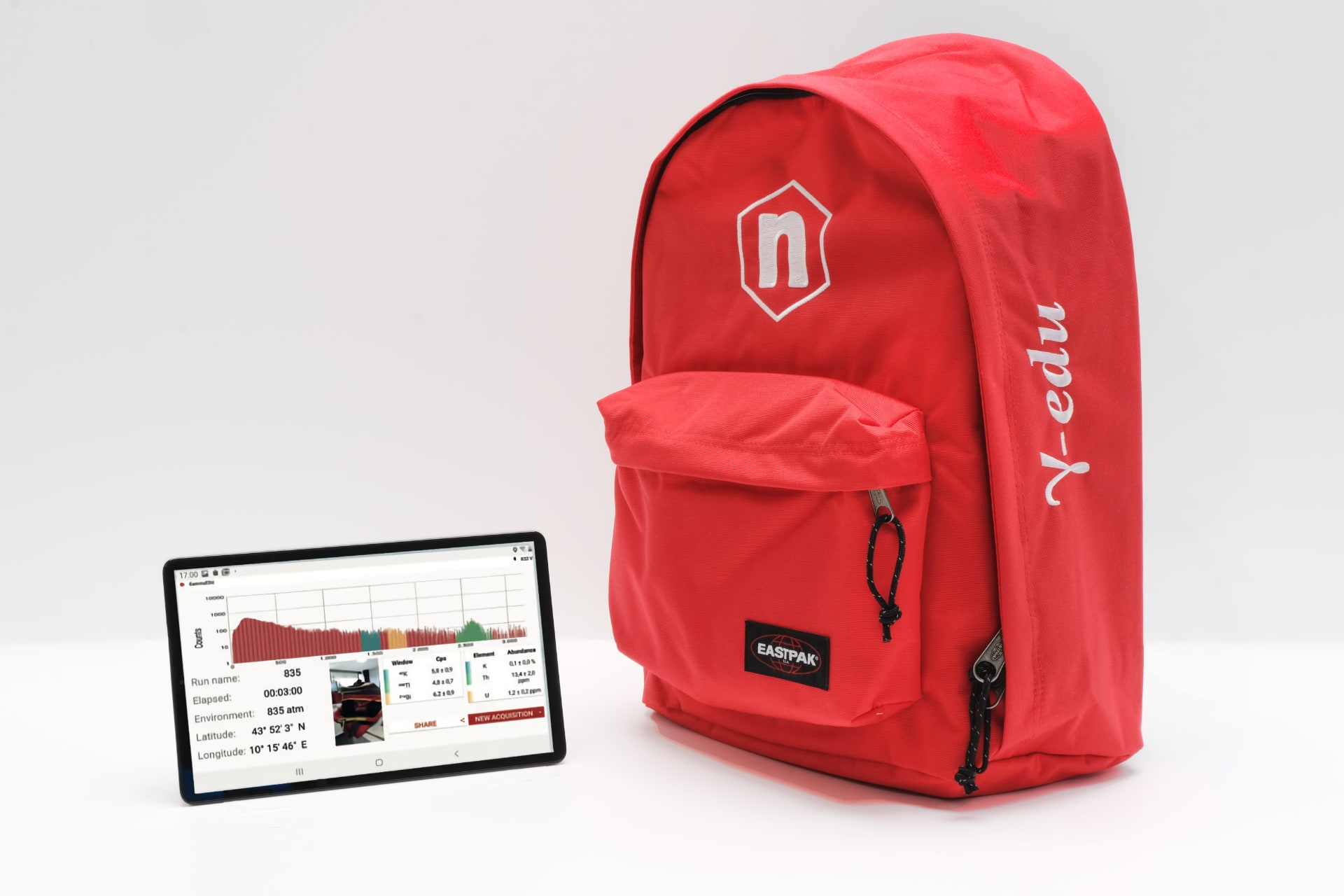Hardware setup
This experiment guide is referred to the SP5640 educational kit.
Equipment: SP5640 – Backpack Detector
| Model | SP5640 |
|---|---|
| Description | Backpack Detector |
Purpose of the experiment
The experiment topic is aimed to study and understanding the radioactive radon gas produced in uranium decays.
Fundamentals
It is now widely known that radon inhalation, in particular its progeny, significantly contributes to the public exposure. Radon is widely distributed in our living and working environment, soil and building materials contain meaningful tracks of its source and its exhalation rates must be determined in order to prevent human health. Radon concentration measurements, both in air and in gas from the soil are very important. The latest ones are used to realize geogenic maps. These maps link the gas to the geology and lithology of the area, allowing the development of more strict criteria for assessing the risk associated with the presence of radon. The radon monitoring is important also for another essential aspect: it is an indicator of the earth crust dynamics. In recent decades, many attempts to connect it to earthquakes prediction have been developed. Currently there is no confirmation about that, but, certainly, the correct radon measurement gives a valuable tool for taking information from the deeper Earth crust layers. As a noble gas, the radon produced by radium alpha decay is relatively free to move. All the rocks contain some empty interstices through which the gas can migrate. The features of gas production areas are function of temperature, pressure, mechanical stress, precipitation and chemical reactions. Only a fraction of the radon, called the ”emanation coefficient”, generated in soil leaves the solid grains and enters the pore volume of the soil.
The study of the natural radionuclides 232Th, 40K, 226Ra, and the radon emanation coefficient exhalation rate is essential to estimate the actual risk for human health associated to a given natural material used for building construction. The natural radioactivity content of building materials depends on the local geology of each region on Earth. One of the requirements of estimate the radiation hazards in closed spaces, aiming to better protect against natural ionizing radiations exposure, is the assessment of the radiation hazards arising from the use of natural building materials in the construction of dwellings, since the majority of people in the World spend most time in indoor environments.
Carrying out the experiment
Power on the γstream inside the red backpack. Power on the tablet and associate the two devices via Bluetooth.
Take care that the γstream internal battery is charged, otherwise use the external power system.
Start the measurement campaign in land field and place the backpack on the floor almost 1m far from the trees, manhole or other construction. Set the acquisition time to about 5 minutes and see the results. If the statistic is not enough increasing the acquisition time.
It is good practice to repeat the measurement to obtain the mean and standard deviation of the result.

Results
The radon emanation has a big dependence on humidity variations, namely from the water content in the material. It is interesting to observe how this phenomenon affects the measurement of the Uranium concentration in the same place with different weather conditions.


